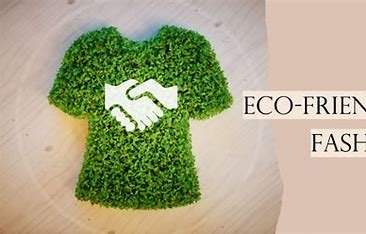Building an eco-friendly wardrobe is an impactful way to reduce your environmental footprint, as the fashion industry is one of the largest polluters in the world. From overproduction and waste to the use of harmful chemicals, traditional fashion practices contribute significantly to environmental harm. However, by embracing sustainable fashion, you can help reduce the negative impact while still enjoying a stylish and functional wardrobe.

1. Choose Quality Over Quantity
- Why: Fast fashion encourages frequent purchasing of low-quality, cheaply made clothing that wears out quickly and ends up in landfills. By focusing on high-quality garments, you reduce the need to replace items frequently.
- How: Invest in timeless, durable pieces made with quality materials like organic cotton, wool, or sustainably sourced fabrics. Well-made items will last longer and withstand wear and tear, reducing the overall consumption of clothing.
2. Opt for Sustainable Fabrics
- Why: Many conventional fabrics, such as polyester and nylon, are derived from petroleum-based products and are not biodegradable. They also contribute to microplastic pollution when washed.
- How: Choose fabrics that are eco-friendly, biodegradable, or made from recycled materials:
- Organic Cotton: Grown without synthetic pesticides or fertilizers, organic cotton is a more sustainable option.
- Linen: Made from flax, linen is biodegradable and requires fewer resources to produce.
- Tencel (Lyocell): A sustainable fabric made from wood pulp using a closed-loop process, which recycles water and solvents.
- Recycled Materials: Look for clothing made from recycled fabrics such as polyester made from recycled plastic bottles or recycled cotton.
- Hemp: An environmentally friendly fabric that requires little water and no pesticides to grow.
3. Prioritize Secondhand and Vintage Clothing
- Why: Buying secondhand or vintage clothing reduces the demand for new clothes, lessening the environmental impact of production.
- How: Shop at thrift stores, consignment shops, and online secondhand marketplaces (like ThredUp, Depop, or Poshmark). Vintage clothing not only reduces waste but can offer unique, one-of-a-kind pieces that reflect personal style.
4. Care for Your Clothes Properly
- Why: Proper care can extend the lifespan of your garments, reducing the need to replace them and decreasing waste.
- How: Follow the care instructions on clothing labels to avoid damaging your items. Wash clothes in cold water, air dry when possible, and avoid frequent washing to reduce wear. When washing synthetic fabrics, consider using a Guppyfriend bag to catch microplastics.
- Clothing Repair: If your clothing gets a tear or loses a button, repair it rather than discarding it. You can even learn basic sewing skills to fix minor damage.
5. Buy Less, Buy Smart
- Why: The overconsumption of fashion is a major contributor to waste and environmental degradation. Mindless shopping leads to a wardrobe full of items that are seldom worn.
- How: Practice mindful consumption by carefully considering your purchases. Ask yourself if an item truly adds value to your wardrobe and if you will wear it frequently. Use a capsule wardrobe approach, where you focus on versatile, high-quality pieces that can be mixed and matched, reducing the need for excess clothing.
6. Support Eco-Friendly Brands
- Why: Many clothing brands are now adopting sustainable practices in response to consumer demand for eco-friendly fashion.
- How: Research and choose brands that prioritize sustainability, ethical manufacturing, and environmentally conscious practices. Look for certifications such as:
- Fair Trade: Ensures workers are paid fair wages and work under safe conditions.
- Global Organic Textile Standard (GOTS): Indicates that garments are made from organic fibers and produced with eco-friendly methods.
- OEKO-TEX: Certifies that fabrics are free from harmful chemicals.
- B Corp Certification: A certification for companies that meet high standards of social and environmental performance.
7. Avoid Single-Use and Trendy Fashion
- Why: Trend-driven fashion often encourages people to buy cheaply made, low-quality garments that are designed to be worn only for a short period.
- How: Embrace timeless, classic styles that won’t go out of fashion. Avoid purchasing trendy, one-season pieces that will likely end up discarded. Instead, invest in pieces that can be worn year-round and can easily be dressed up or down.
8. Opt for Natural and Non-Toxic Dyes
- Why: Conventional dyeing processes use harmful chemicals and water-intensive methods that can harm the environment and workers.
- How: Look for clothing dyed with natural, plant-based dyes or choose brands that use environmentally friendly dyeing processes, such as eco-friendly, waterless dyeing technologies.
9. Embrace Clothing Rental Services
- Why: Renting clothing for special occasions or seasonal wear can reduce the need to purchase items that will only be worn once or twice.
- How: Use clothing rental services like Rent the Runway or HURR Collective, where you can rent dresses, suits, and other special occasion wear. Renting allows you to enjoy new styles without contributing to overproduction.
10. Recycle or Upcycle Old Clothing
- Why: Old clothing can often be repurposed, preventing it from ending up in landfills.
- How: When you’re ready to part with old clothes, consider recycling them. Many brands and organizations offer clothing take-back programs where old garments are collected and either recycled into new fabrics or repurposed for other uses. You can also upcycle old clothes into new items, such as turning an old T-shirt into a tote bag.
11. Educate Yourself on Ethical Fashion
- Why: Understanding the environmental and social impacts of your fashion choices can help you make more conscious decisions.
- How: Learn more about the fashion industry’s impact on the planet and its workers. Many organizations, such as Fashion Revolution, provide resources and information on sustainable and ethical fashion practices. Understanding the story behind your clothes will encourage you to make more responsible choices.
Building a Sustainable Wardrobe: Practical Steps
- Start with the Basics: Begin by focusing on key pieces like jeans, t-shirts, and jackets. Look for classic, versatile items that you can wear for multiple occasions.
- Declutter Your Closet: Go through your existing wardrobe and evaluate each piece. Donate or recycle items you no longer wear, focusing on quality rather than quantity.
- Set a Fashion Budget: Limit yourself to purchasing a set number of items each season to avoid impulse buying.
- Shop Local and Ethical: Consider supporting local artisans and small businesses that produce clothing in a more ethical, sustainable manner.
- Host a Clothing Swap: Organize a clothing swap with friends or family to refresh your wardrobe without buying anything new.
Conclusion
Building an eco-friendly wardrobe is about making thoughtful choices that prioritize sustainability, quality, and longevity over quantity and trends. By opting for timeless pieces, supporting ethical brands, and taking care of your clothes, you can reduce your fashion footprint and contribute to a more sustainable, responsible fashion industry. Fashion can still be fun and stylish while also being kinder to the planet!
